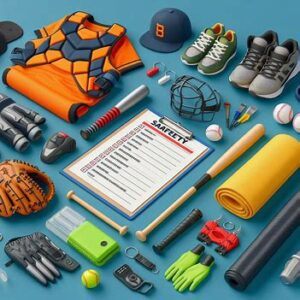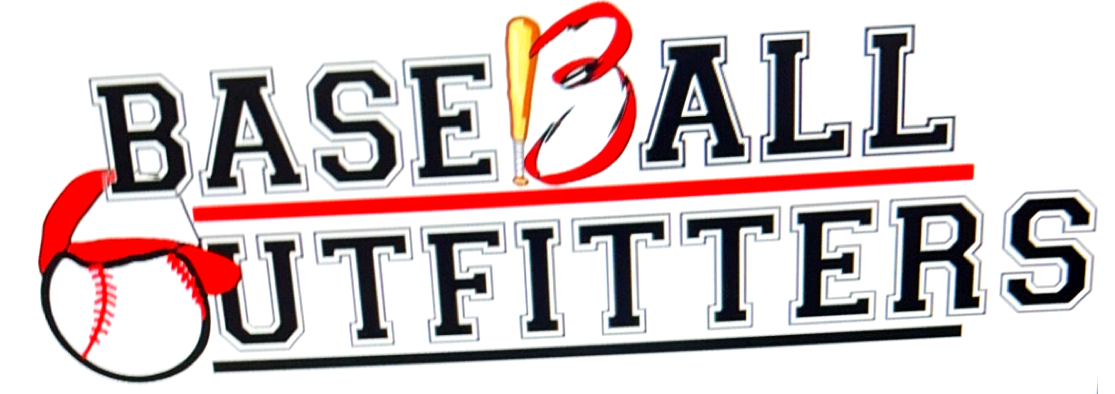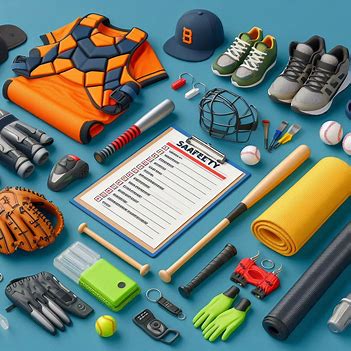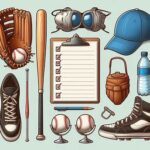
When it comes to youth baseball, safety gear is non-negotiable. No one wants to see their kid hurt out on the field, and good gear is the first line of defense. Whether it’s a fast pitch coming in hot or a slide into home base, the right equipment can make all the difference between a close call and a trip to urgent care.
Baseball isn’t just about fun and games; it can get pretty rough out there. Statistics show that youth baseball players face a significant risk of injuries, ranging from minor scrapes and bruises to more serious issues like concussions and fractures. That’s why equipping kids with the best safety gear is so important.
Experts agree on the necessity of proper baseball gear. Coaches, pediatricians, and sports safety officials all stress how critical it is for young players to wear helmets, protective cups, and other safety equipment. Pediatricians, in particular, highlight how kids’ bones are still developing, making them more susceptible to injuries.
Safety gear doesn’t just protect; it gives kids the confidence they need to play their best. Knowing they’re well-protected allows them to focus on their performance and enjoy the game. Plus, it gives parents peace of mind, knowing they’ve done everything they can to keep their children safe while they’re out on the field.
Essential Safety Gear Checklist
Helmets are top of the list. Good helmets not only meet safety standards but also fit snugly to offer maximum protection. Look for helmets with face guards for extra safety, especially for younger players.
Protective cups might be an uncomfortable topic, but they’re crucial for avoiding serious injuries. Make sure the cup fits properly and is worn during all games and practices.
Gloves and mitts should be chosen with safety in mind. A well-made glove not only helps the player catch the ball more effectively but also protects their hands from injuries. Ensure the glove is the right size for your child’s hand.
Cleats are essential for good footing and preventing slips. Opt for cleats that provide good ankle support and are designed specifically for baseball. This helps kids move safely and efficiently on different field surfaces.
Baseball pants and sliding shorts offer protection during slides and dives. The extra padding in sliding shorts can prevent painful abrasions and bruises, making them essential gear for infielders.
Chest protectors are often overlooked but can make a big difference. These protectors safeguard the player’s chest and ribcage from impact injuries. Some models even offer additional protection for the shoulders and back.
Choosing the Right Safety Gear for Your Child
Finding the right safety gear for your child isn’t just about grabbing the first item off the shelf. Proper fit and comfort go a long way in keeping your child safe and focused on the game. Different brands offer various sizing guides, so take the time to measure your child accurately. Ill-fitting gear can be just as dangerous as no gear at all.
Durability and comfort are also key. Youth baseball gear needs to withstand a lot of wear and tear. Look for materials that are both durable and comfortable. Your child needs to feel comfortable in their gear to perform their best. Gear that pinches or chafes can be distracting and lead to poor focus, increasing the risk of injury.
Recommendations from professionals can be incredibly useful. Coaches and experienced players usually have valuable insights into what brands and gear work best. Don’t hesitate to ask for their opinions—they’ve likely spent years figuring out what’s most effective.
Brand comparisons and reviews provide an excellent way to judge the quality of different gear options. Online reviews can offer insights into how well the gear holds up over time and what other parents think. Reading reviews before making a purchase can save you time and money, and ensure your child gets the best possible protection.
Maintaining and Inspecting Safety Gear
Keeping safety gear in top condition is crucial for maximizing its effectiveness. Regularly inspecting all gear ensures that everything is still providing the level of protection your child needs. Look for cracks in helmets, frayed straps on chest protectors, and any wear and tear on gloves and cleats. If any part of the gear looks compromised, it’s better to replace it sooner rather than later.
Routine cleaning and care can extend the life of the gear. Follow the manufacturer’s cleaning instructions to the letter. Helmets, for instance, often come with liners that can be removed and washed. Gloves can sometimes be treated with specific oils to keep the leather supple and in good shape. Keeping the gear clean isn’t just about hygiene; it helps maintain the integrity of the materials.
Knowing when to replace gear is essential. Even if the gear doesn’t show obvious signs of wear, it might still need replacing after a certain period or use. Helmets, for example, usually have a lifespan of a few years, even if they don’t seem damaged. Staying on top of replacement schedules can ensure continuous protection for your child.
Expert advice can provide extra peace of mind and prolong the gear’s usability. Coaches and equipment specialists can offer tips tailored to your child’s specific needs and the type of baseball they play. Whether it’s guidance on how to fit gear properly or advice on the best brands, expert insights can be invaluable in keeping your young athlete safe.


